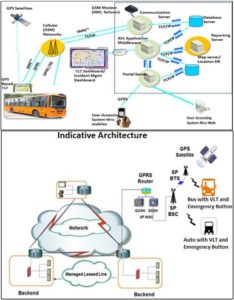Introduction & Brief about ESP32:
The ESP32 microcontroller has gained immense popularity in the world of IoT and embedded systems due to its versatility and powerful capabilities. While its default configuration is suitable for many projects, hardware customization can elevate your project to new heights. In this blog post, we’ll delve into the realm of hardware customization for ESP32 development, exploring various aspects and benefits.
The ESP32 is a powerful microcontroller that offers a wide range of capabilities due to its integrated processor and various hardware components. Let’s dive into more detailed information about the ESP32’s inside processor capabilities:
Dual-Core Processor:
The ESP32 features a dual-core processor, which consists of two Tensilica Xtensa LX6 CPUs. These cores can run independently, enabling multitasking and parallel processing. This is particularly useful for tasks that require real-time responsiveness, such as managing communication protocols while simultaneously handling sensor data processing.
Clock Speed:
Each core of the ESP32 can run at clock speeds of up to 240 MHz. This allows for quick execution of tasks and efficient handling of real-time operations.
Memory:
The ESP32 provides up to 520KB of SRAM for data storage and manipulation. Additionally, it has up to 4MB of external Flash memory for program storage. The ample memory space is crucial for storing code, data, and variables in your projects.
Floating-Point Unit (FPU):
Both cores of the ESP32 are equipped with a floating-point unit (FPU), allowing them to perform floating-point arithmetic operations efficiently. This is essential for applications that involve complex mathematical calculations, such as signal processing or sensor fusion.
Advanced Peripheral Interfaces:
The ESP32 boasts a variety of peripheral interfaces, including SPI, I2C, UART, I2S, and PWM. These interfaces enable seamless communication with a wide range of external sensors, displays, actuators, and other components.
Wireless Communication:
The ESP32 is known for its built-in Wi-Fi and Bluetooth capabilities. It supports 802.11 b/g/n Wi-Fi with a wide range of features, including access point (AP)
mode, station mode, and Wi-Fi Direct. The integrated Bluetooth module supports both Classic Bluetooth and Bluetooth Low Energy (BLE), making it suitable for diverse connectivity needs.
Security Features:
The ESP32 includes security features like hardware-accelerated encryption (AES, SHA-2) and a hardware-based random number generator. These features help secure your data and communications.
Ultra-Low Power Consumption:
The ESP32 offers power-saving modes, making it well-suited for battery-powered applications. Its “Deep Sleep” mode can significantly reduce power consumption, allowing the device to be operational for extended periods while conserving energy.
Analog-to-Digital Converter (ADC):
The ESP32 has a 12-bit SAR ADC with up to 18 channels. This enables accurate analog-to-digital conversion for reading sensor values and other analog signals.
Touch Sensor Inputs:
The ESP32 has a built-in touch sensor controller, allowing you to integrate touch-based user interfaces into your projects without needing external components.
Camera Interface:
Some ESP32 variants include a dedicated camera interface, which facilitates the connection of camera modules for image and video processing applications.
Rich Development Ecosystem:
The ESP32 is supported by the Arduino IDE, PlatformIO, and the ESP-IDF (Espressif IoT Development Framework), providing a robust and versatile development environment for programming and debugging.
These capabilities make the ESP32 a versatile microcontroller that can be used for a wide range of projects, from IoT applications to robotics, home automation, sensor networks, and more. Whether you’re a beginner or an experienced developer, the ESP32’s features offer plenty of room for innovation and creativity.
Customization for ESP32 Development
Custom Pinout Configurations:
One of the most straightforward ways to customize your ESP32 project is by reconfiguring the pinout. This enables you to align the pin functionalities according to your project’s requirements, ensuring optimal connections with sensors, actuators, and other components.
External Modules Integration:
ESP32’s modular design allows for seamless integration of external modules like sensors, displays, and communication modules (e.g., Wi-Fi, Bluetooth). Learn how to select and integrate these modules to enhance your project’s capabilities.
Power Supply Modifications:
Tailoring the power supply to your specific needs can have a significant impact on performance and energy efficiency. Explore voltage regulation, battery management, and power-saving techniques to optimize your device’s power consumption.
Antenna Customization:
Wireless communication is a cornerstone of IoT projects. Discover how to customize antenna design and placement to achieve better signal strength, range, and reliability for Wi-Fi and Bluetooth connections.
Adding Peripherals and Interfaces:
Extend your ESP32’s capabilities by adding custom peripherals and interfaces. Learn how to integrate I2C, SPI, UART devices, and more to communicate with various external components.
Enclosures and Form Factors:
Hardware customization isn’t just about the internals. Explore ways to design or select enclosures and form factors that suit your project’s physical requirements while ensuring proper ventilation and protection.
Advanced Debugging and Testing:
Customized hardware might introduce new challenges during debugging and testing. Discover strategies to troubleshoot issues and verify the functionality of your customized ESP32 hardware.
Firmware Adaptation:
Hardware changes can sometimes necessitate adjustments in firmware. Learn how to adapt your code to accommodate hardware customizations and take advantage of new features.
Conclusion:
Customizing the hardware of your ESP32 opens up a world of possibilities for creating tailored IoT and embedded projects. By exploring pinout configurations, integrating external modules, optimizing power supply, enhancing wireless communication, and more, you can elevate your project’s performance and uniqueness. Remember that hardware customization requires careful planning and testing, but the results can be truly rewarding.
Whether you’re a hobbyist or a professional developer, delving into hardware customization for ESP32 development can unlock new avenues for creativity and innovation. Start experimenting today and see how your projects can reach new heights!
PC: Mr.Srinivas, Team Lead, RioSH Technologies


